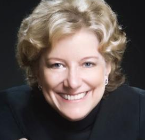Speaking YouTube

YouTube contains a lot of irrelevant content: according to cultural anthropologist Michael Wesch, some 20 hours of new video is uploaded to YouTube every minute.
But all of it represents a new form of cultural literacy, Wesch says—a new language of shared images and intensely personal revelations that can be used to connect people in new ways and, perhaps, even get them to care more about each other.
As a professor of introductory anthropology at Kansas State University, Wesch says he has a “front row seat" from which to watch new cultural trends emerge from the youngest adult generation, and for the past two-and-a-half years, Wesch has been inviting his students to help him analyze the vast YouTube community.
After trawling through mega-gigs of content, watching hours of videos and posting videos of their own, Wesch says, he and his students “are finding that the same conditions of ease and anonymity that enable people to get snarky online" can also encourage them to participate in meaningful and collaborative new projects. In fact, says Wesch, YouTube and other social media can mitigate the cultural tension between teens' conflicting needs for independence and community by offering them "connection without constraints." What looks like narcissism and individuality is actually a search for identity and recognition, Wesch told the digerati attending this week's Personal Democracy Forum in Manhattan. “In a society that doesn’t automatically grant identity and recognition, you have to create your own.”
Wesch says he's hopeful that social media will ease the “narcissistic disengagement” of many young people and encourage them to be more politically and civically engaged. Already, he says, some heroes have emerged—including the anonymous YouTube character who filmed himself giving hugs to strangers in the streets, and One World, the person who wore a Guy Fox mask and used his anonymity as a platform for collaboration, asking people to write messages on the palms of their hands and to hold them up to their Webcams for sharing. Millions of people shared this way, mostly about the need to love one another and to look beyond themselves.
“When I’m using a Webcam,” Wesch explains, “I’m not talking to you, I’m talking to it. When you’re Twittering, you’re not talking to me, you’re talking to it. Or when I’m on Facebook, I’m not talking to you, I’m talking to it.” The point, says Wesch: When communicating face-to-face, people bring many different versions of themselves into a conversation based on the context of that conversation. “But when you’re sitting in front of a camera, or twittering to hundreds if not thousands of people in a community who you cannot see and who cannot see you, you don’t know who you are talking to or when or in what context, and so [communication via social media] it is forcing a kind of context collapse—a deeper level of self-awareness not present in simple, everyday conversation. People can get deeply self-reflective on YouTube and confessional…and reveal things they would otherwise refuse to reveal, even to their family and close friends.”
Wesch urged the journalists, business developers, and social media specialists attending PDF to start thinking of YouTube as "a new kind of public sphere" where new types of conversations and forms of communication can occur. “The YouTube debates [during last year's presidential election] were flawed in that they allowed TV to dictate that conversation," Wesch says. “We have an opportunity, on YouTube and with other social media, to create a whole new groundwork for the way these [civic] conversations work.”
Wesch then challenged attendees to help the culture move away "from its current state of 'whatever, I don't care' ...to one in which we can say 'I care, let’s do whatever it takes by whatever means necessary.'"
[Wesch connected: attendees stopped tweeting long enough to give him a standing ovation.]
For more about Wesch and his observations about the cultural signifiance of social media, here's a lecture he gave last year at the Library of Congress:
(Post written by Marcia Stepanek)
(Webcam photo, top, from The Message video on YouTube)
Labels: marcia stepanek, Mike Wesch, personal democracy forum 2009, social media, video literacy, viteracy, YouTube

2 Comments:
what i would give to see him in person. the loc presentation blew me away. glad to see your blog up and running again...hope the move went well.
Thanks for posting and for reading! And yes, Wesch's presentation was fascinating. It's very refreshing to hear from someone studying the phenom of YouTube who can explain its significance in a way that entertains and shares the charm and intensity of the medium.
Post a Comment
Subscribe to Post Comments [Atom]
<< Home